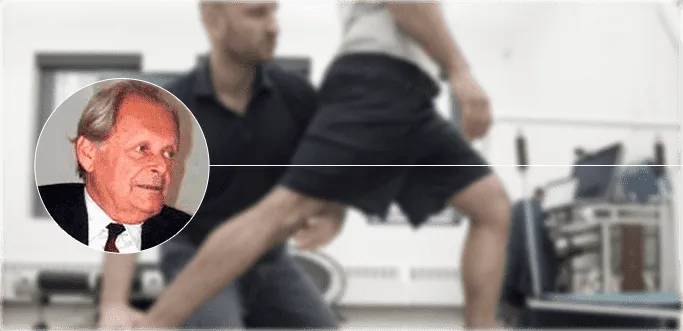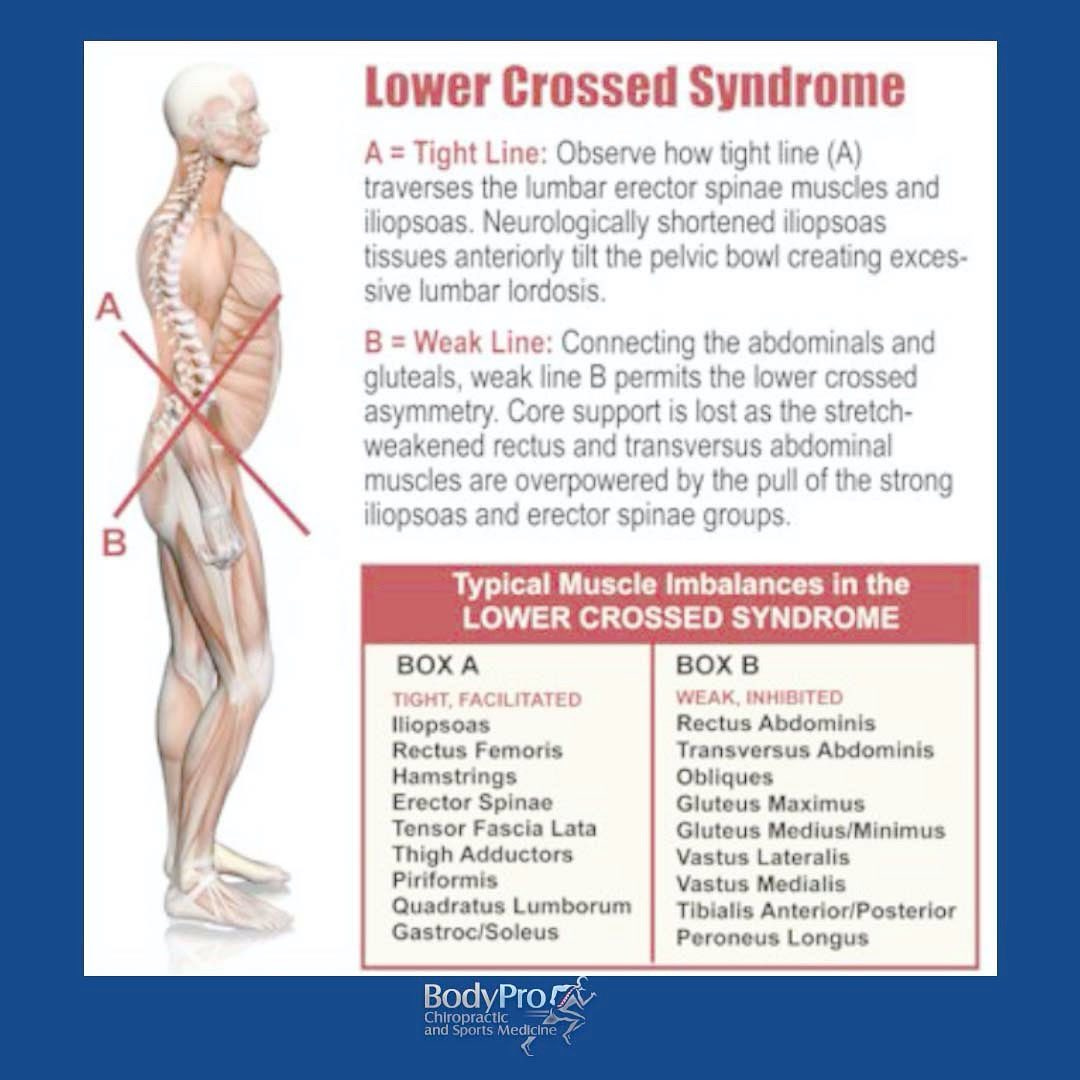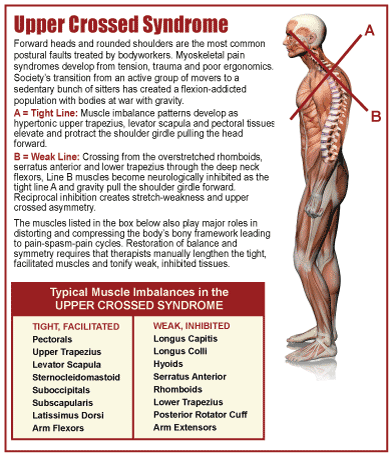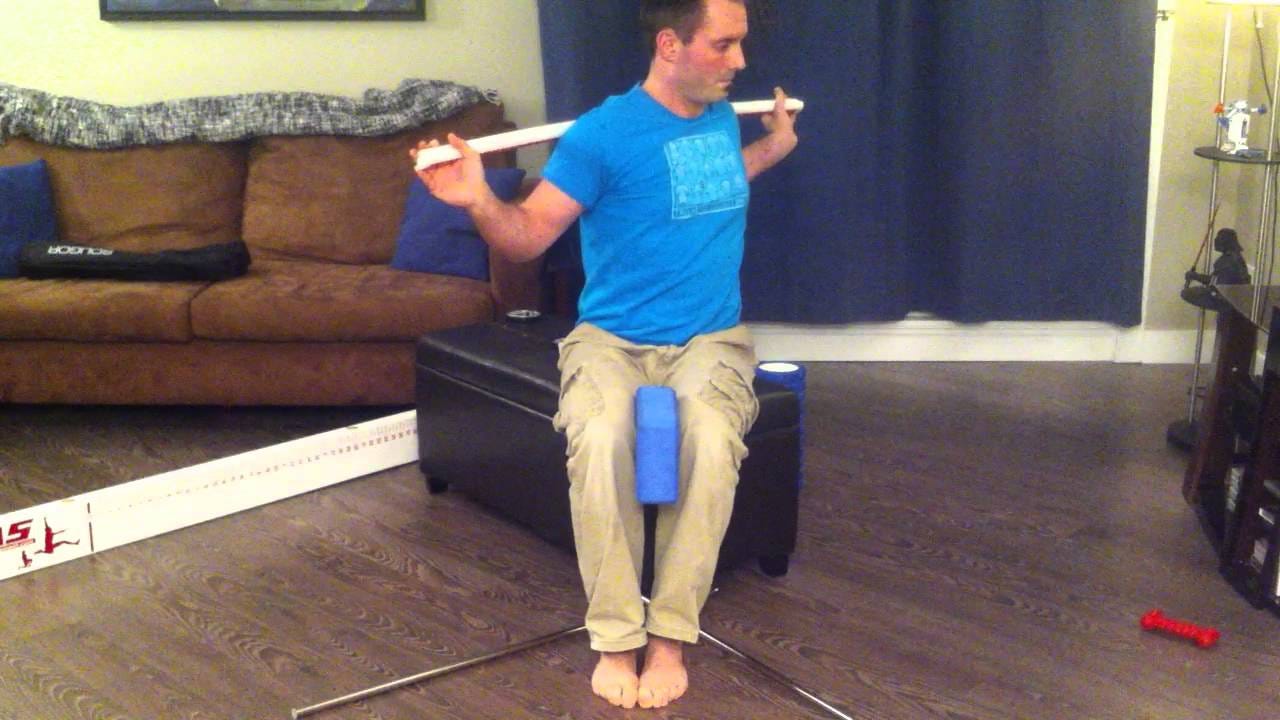
Vladimir Janda was a physician who, in the late 1970s, found aberrant and unusual postures, motions, joint actions, and muscle imbalances within the human body. He termed the phenomena as lower crossed syndrome (LCS) and upper crossed syndrome (UCS) (Page, Lardner, & Frank, 2010). Awareness of UCS and LCS is imperative, as the aforementioned syndromes can feed into the chronic musculoskeletal pain cycle (CMPC), further deepening pain and movement dysfunction (et al., 2010).
A constituent, among others, common to both UCS and LCS is restriction in joint range of motion (i.e., mobility) about the thoracic and hip regions, respectively. Thus, restoring such traits is paramount. As a means of appreciating UCS and LCS, the following will explore mobility restrictions more deeply, providing normal anatomy, presentation of dysfunction, underlying causes, and assessments to measure joint range of motion.

LCS is characterized by inhibited abdominals of the anterior side, in conjunction with the gluteus maximus/minimus/medius on the posterior side of the body. The rectus femoris and psoas major of the anterior side, in conjunction with the thoraco-lumbar extensors of the posterior side, have a tendency to be overactive/facilitated.
Essentially, a crossed pattern of facilitated and inhibited muscles exists (Page et al., 2010). Such imbalances drive the hip joint/pelvis into an anterior tilt, causing a hyperlordic curve in the lumbar vertebrae with an associated extended abdomen (Sahrmann, 2002). The individual may also present with low back pain; symptoms may increase when reaching overhead, standing, or lying supine with the legs extended (Sahrmann, 2002).

Hip mobility/LCS can be screened by implementing the modified Thomas test (MTT). The MTT is designed to assess the resting length of 4 hip flexors; psoas major, rectus femoris, tensor fasciae latae, and iliacus (Page et al., 2010). The client sits at the edge of a table and slowly lowers, with help, into a supine position. One leg is pulled into full hip flexion (i.e., knee to chest), while the examined hip is slowly lowered into extension, hanging freely.
Normal resting hip extension in a supine position is 0°, indicated by the femur resting along the table. Normal resting length of the rectus femoris allows the knee to remain at 90° knee flexion. Deviations (i.e., hip resting above the table, or the knee less than 90° flexion) indicate facilitated/short psoas and rectus femoris muscles (Page et al., 2010).

UCS is characterized by crossed relationship between the upper posterior and anterior regions of the torso. The levator scapulae and upper trapezius on the posterior side tend to be facilitated, in conjunction with the pectoralis minor and major on the anterior side. Conversely, serratus anterior and lower trapezius on the posterior side is inhibited, in addition to the deep cervical flexors of the anterior side (Page et al., 2010). Winged scapula can stem from UCS, and the aforementioned impairment can become pronounced during extension and flexion of the arms (Sahrmann, 2002).
Additionally, the aforementioned crossed patterns drive the thoracic spine into hyperkyphosis, limiting extension and rotation (Page et al., 2010). A person with UCS may present with pain in the anterior shoulder area, and symptoms may increase with overhead activities (Sahrmann, 2002). Additionally, because the upper trapezius and other neck muscles (i.e., anterior and middle scalene) are facilitated, the brachial plexus nerves may become compressed causing thoracic outlet syndrome (TOS) (Sahrmann, 2002).

A simple assessment protocol to determine thoracic spine mobility is the seated rotation test (Johnson, Kim, Yu, Saliba, & Grindstaff, 2012). The individual sits with the hips and knees flexed at 90°, with a yoga block between the knees, to minimize motion of the lower extremity. A dowel is placed along the spine, next to the inferior borders of the scapulae.
The bar is held in place by wrapping the elbows behind the bar; such a position helps encourage a tall spine during the test, to isolate thoracic rotation as much as possible (Johnson, et al., 2012). This author experienced difficulty determining normal thoracic spine rotation averages from peer-reviewed sources. Instead, this author drew conclusions from a Titleist Performance Institute (TPI) Certified Golf Fitness Instructor manual; it indicated that 45° left and right rotation was considered average (Titleist Performance Institute, 2011).
Janda’s observations and categorization of UCS and LCS has provided the exercise professional with another means to appreciate movement dysfunction; the interplay between joint function, muscle imbalances, and the central nervous system is a reminder that post-rehabilitation/corrective exercise is a complex process, addressing several systems within the body. Finally and most importantly, appreciation of such processes serves as a critical first step in solving movement impairments, thereby helping liberate individuals from dysfunction and pain.
References
Johnson, K.D., Kim, K.M., Yu, B.K., Saliba, S.A., Grindstaff, T.L. (2012). Reliability of thoracic spine rotation range of motion measurements in healthy adults. Journal of Athletic Training, 47(1), 52-60.
Page, P., Lardner, R., & Frank, C. (2010). Assessment and treatment of muscle imbalances: The Janda approach. Champaign, IL: Human Kinetics.
Sahrmann, S. (2002). Diagnosis and treatment of movement impairment syndromes (1rst ed.). St. Louis, MO: Mosby Inc.
Titleist Performance Institute (2011). TPI certified seminar manual. Oceanside, CA: Acushnet Company.
-Michael McIsaac
